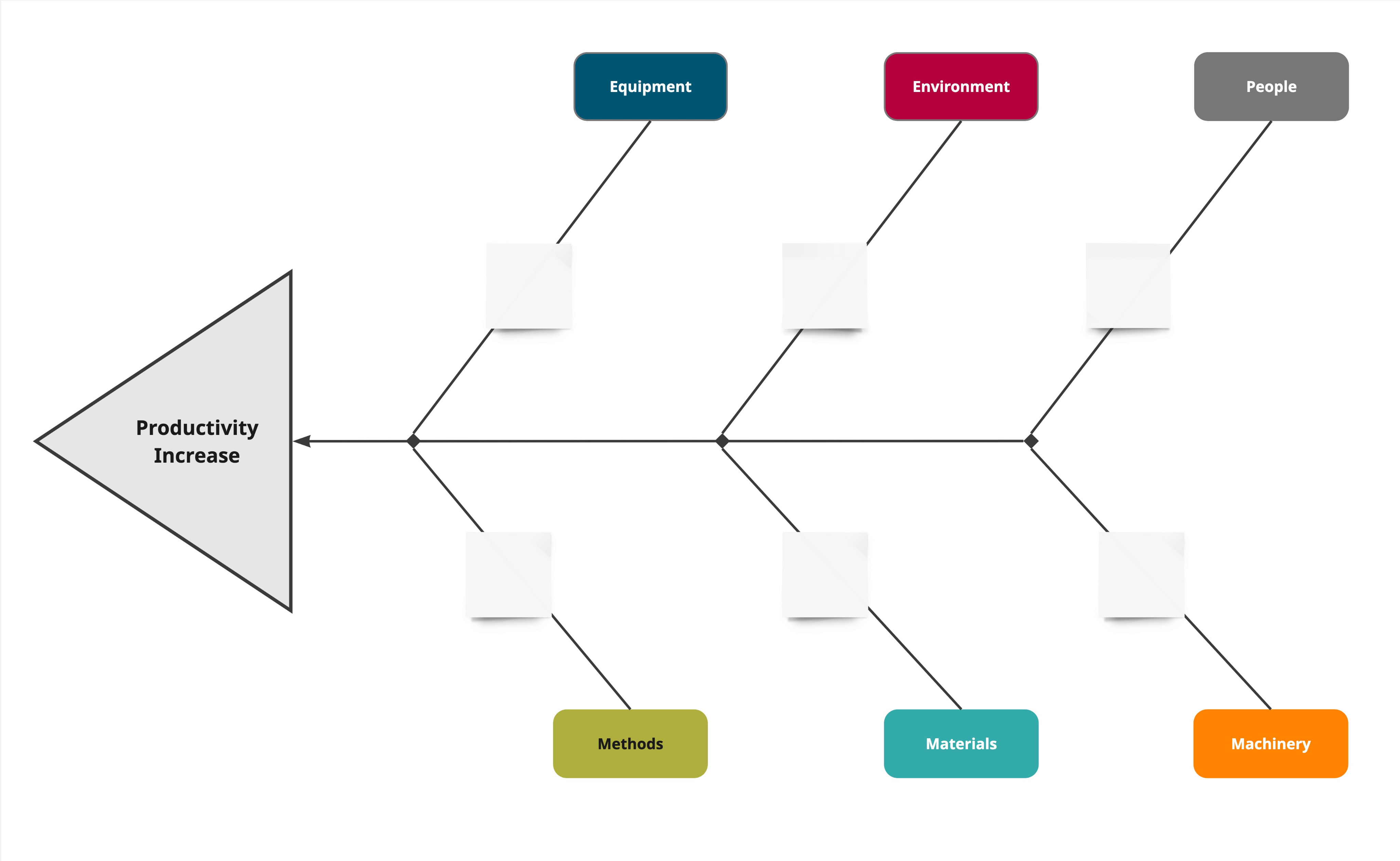
Problemsolving Technique 7: Fishbone
How the fishbone technique can solve complex problems

Mika Lembrecht
Tuesday, November 12, 2024
The fishbone diagram, also known as the Ishikawa diagram or cause-and-effect diagram, is a widely used problem-analysis tool. It was developed by Kaoru Ishikawa, a Japanese quality control expert, and is used to systematically identify and present the causes of a particular problem. The diagram is structured like a fish skeleton, with the problem at the ‘head’ position and the possible causes arranged along the ‘bones’.
How does the fishbone diagram work?
The process of creating a fishbone diagram begins with clearly defining the problem to be analysed. This problem is placed at the top of the diagram. Next, the main categories of causes are identified, which typically represent the ‘fish bones’. These categories can vary depending on the use case, but often include aspects such as people, machines, materials, methods, environment and measurement. Within each of these categories, specific causes are listed that could contribute to the problem. This structured approach allows teams to thoroughly examine the various dimensions of an issue.
Advantages of the fishbone diagram
A key advantage of the fishbone diagram is its ability to simplify the analysis and visualisation of complex problems. By organising the causes into categories, it helps to reduce complexity and create a clear structure. This makes it easier for teams to identify the underlying causes of a problem and develop appropriate solutions. The visual nature of the diagram also promotes better understanding and more effective communication within the team.
Promoting root cause analysis
The fishbone diagram supports root cause analysis by helping teams to systematically identify the causes of problems and failures. By analysing the various causes, targeted measures can be taken to solve the problems. This leads to greater efficiency, better quality and lower costs. In addition, the diagram can be used as a basis for further analysis techniques such as the 5 Whys method to delve deeper into the root cause.
Why is the fishbone diagram so effective?
The fishbone diagram provides a structured method for analysing causes and helps teams to make informed decisions and develop sustainable solutions. By promoting collaboration and systematic thinking, the fishbone diagram significantly improves efficiency and quality in a company. It enables comprehensive analysis and helps teams to identify the true cause of problems, leading to more effective and long-term solutions.
Example of how to use a fishbone diagram
A typical example could be analysing a production issue, where different categories such as machine performance, material quality and working methods are examined to identify the root cause of the issue. Here is a pre-designed example of a fishbone diagram that you can use for analysis and problem solving.

Workshop
From 25.03-27.03 2025, a workshop organised by us will take place on the topic of successfully solving complex problems. Join us and expand your knowledge.

Services
Workshops
Resources
All Rights Reserved.




